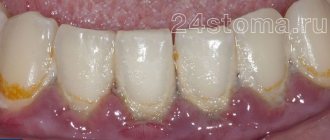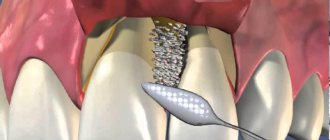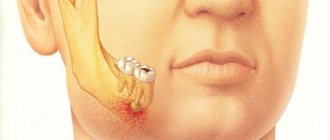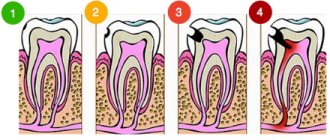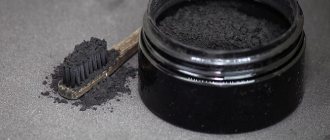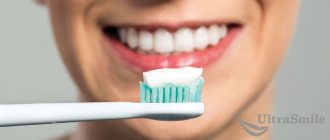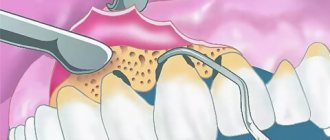From this article you will learn:
- What does Lincomycin help with?
- Lincomycin capsules – price 2021,
- how to use Lincomycin in dentistry and for the treatment of purulent-inflammatory diseases.
The article was written by a dentist with more than 19 years of experience.
Lincomycin is an antibiotic of the lincosamide group, which is quite outdated and does not have a wide spectrum of antimicrobial action. The advantages of this antibiotic are its low price, as well as its effectiveness in treating infection resistance to penicillin antibiotics. Remember that this is a prescription drug that should be used only as prescribed by a doctor, and in addition, lincomycin is strictly contraindicated for pregnant and lactating women, as well as children under 12 years of age.
The antibiotic Lincomycin in dentistry at one time found quite wide use, which was due to its relative affinity for bone tissue. However, it is unlikely that any sane dentist will now decide to prescribe lincomycin for dental implantation or gum inflammation. The range of indications for the use of Lincomycin in dentistry is, as a rule, limited to its purpose - either after a complex tooth extraction, or during tooth extraction due to inflammation, or with purulent periostitis of the jaw (i.e. gumboil).
Lincomycin capsules, ampoules –
If anyone is interested, the chemical formula of lincomycin is as follows: (2S, 4R)-N-[(1R, 2R)-2-hydroxy-1-[(2R, 3R, 4S, 5R, 6R)-3, 4,5-trihydroxy-6-(methylsulfanyl)oxan-2-yl]propyl]-1-methyl-4-propylpyrrolidine-2-carboxamide. In this article we will talk about the optimal indications for the use of Lincomycin, as well as how to avoid the risk of developing a complication almost traditional for lincosamide antibiotics - antibiotic-associated diarrhea.
Lincomycin - price, release forms
The antibiotic lincomycin has 3 release forms (capsules, ampoules and ointment), but in any case you will find this drug in pharmacies only from a Russian or Belarusian manufacturer. Moreover, not only Lincomycin is available by prescription in capsules or ampoules, but even in ointment forms. The cost of all drugs is lower - indicated for 2021.
- Lincomycin capsules - each capsule contains 250 mg of the active substance “lincomycin”. For Lincomycin capsules, the price starts from 75 rubles (the package contains 2 blisters of 10 capsules each). If we take into account the standard regimen of use for an adult, 1 package is only enough for 3 days of use, which makes this drug even more expensive than the antibiotic Tsiprolet (from the group of fluoroquinolones).
- Lincomycin in ampoules - each package contains 10 ampoules of 1.0 ml. Each ampoule contains 300 mg of lincomycin hydrochloride, which in percentage terms is a 30% concentration. If we take into account the standard dosage regimen for adults, 1 package is enough for only 2.5 days of antibiotic therapy. The cost of 1 package will be from 90 to 130 rubles (for a short 5-day course of treatment, 2 packages will be required).
- Lincomycin ointment 2% - intended for external use only, used for purulent inflammation of the skin. The ointment is available in tubes of 15 g - with a concentration of the active substance of 2%. The ointment is produced in Kurgan, and its cost will be from 150 rubles.
Lincomycin: indications for use
For the antibiotic Lincomycin, the instructions for use contain information that the drug tends to accumulate predominantly in bone tissue and joints, as well as bronchopulmonary secretions. Taking into account the supposed tropism of lincomycin to certain tissues, it is usually prescribed for the following diseases -
- infections of bone tissue and joints (including in dentistry),
- purulent skin infections,
- with boils and carbuncles,
- purulent otitis media,
- tonsillitis, pharyngitis,
- lung abscess, pleurisy.
An important point - when taking lincomycin, you need to take into account that if you have previously taken antibiotics from the lincosamide group, the infection may no longer be sensitive to antibiotics from this group. This is due to the fact that staphylococci very quickly develop resistance to lincomycin and clindamycin. And in fact, it is now difficult to imagine, for example, an ENT doctor who would prescribe this rather outdated antibiotic to his patient.
Prescribing lincomycin for all these diseases makes sense - only if there are microflora culture results that show the sensitivity of infectious agents to lincomycin. In most cases, doctors prescribe antibiotics without studying the microflora (i.e., the selection of the drug is carried out empirically) - and this entails the need to immediately prescribe broad-spectrum antibiotics. Lincomycin has only a very narrow spectrum of antimicrobial activity.
pharmachologic effect
An antimicrobial agent that belongs to the group of lincosamides. Its bacteriostatic effect is noted in relation to a wide range of microorganisms. If higher doses of the drug are used, it may produce a bactericidal effect.
The mechanism of the antimicrobial effect of the antibiotic is as follows: under its influence, protein synthesis is inhibited in the cells of microorganisms. It has pronounced activity against gram-positive anaerobic and aerobic microorganisms. Resistance to the influence of the drug is demonstrated by strains of Enterococcus faecalis, as well as viruses, fungi, and protozoa. Most gram-negative microorganisms are also resistant to it. Slow development of resistance to this drug has been noted. Cross-resistance of this substance with clindamycin has been noted.
Lincomycin in dentistry –
The use of Lincomycin in dentistry was initially justified by the fact that this antibiotic has an affinity for bone tissue.
This means that it accumulates in higher concentrations in bone tissue than in other tissues. But I learned that this is not entirely true only after working as a dentist for 10 years, and until that moment we were never given information that lincomycin is unevenly distributed throughout the bone mass (24stoma.ru). It turns out that its increased concentration is created mainly only in the bones of the small pelvis, and not at all in the jaws. Lincomycin capsules used to be one of the most prescribed antibiotics in dentistry, although I am sure that it is still actively prescribed in remote regions of Russia. The usual regimen of use is 2 capsules 3 times a day (for 5-7 days). The following situations can be considered the most optimal indications for the use of this antibiotic in dentistry:
- if a tooth is removed due to purulent inflammation,
- to prevent complications after complex tooth extraction or tooth root resection,
- after opening the flux on the gum (Fig. 1),
- with the development of inflammation of the socket of the extracted tooth (Fig. 2).
Abscess on the gum and inflammation of the socket: photo
It should be noted that in case of a serious purulent infection, Lincomycin, of course, should not be prescribed (otherwise, in any case, it must be combined with other antibiotics, for example, fluoroquinolones). But why do this if you can immediately prescribe an effective broad-spectrum antibiotic - the same antibiotic from the fluoroquinolone group. Lincomycin also demonstrates low effectiveness in the treatment of inflammatory gum diseases, especially in the aggressive course of chronic periodontitis.
Lincomycin capsules - dosage regimen, reviews
Lincomycin for oral administration is available in 250 mg capsules and is a prescription drug that should only be used as directed by a doctor. The regimen for use in children over 12 years of age and adults is 2 capsules 3-4 times a day (the duration of administration is determined by the doctor, but usually from 5 to 7 days). In younger children and pregnant and lactating women, taking the drug is prohibited.
The drug should be taken only on an empty stomach - approximately 1-1.5 hours before meals (below we will tell you what this is connected with). And this may be inconvenient, but according to the instructions - you should only take Lincomycin capsules with a full glass of water! Failure to comply with this rule will affect the effectiveness, as well as the already low safety of the drug.
Contents of one capsule of Lincomycin:
→ Lincomycin: official instructions for use (download in PDF)
Reviews of lincomycin capsules:
Most modern antibiotics have high bioavailability (absorbed from the intestines quickly and completely), which, for example, allows them to be taken after meals. Taking lincomycin capsules 1.5 hours before meals is associated with low bioavailability of the drug - even when taken on an empty stomach, no more than 30% of the active substance is absorbed from the intestines. At the same time, simultaneous food intake reduces the absorption of lincomycin in the intestine - only up to 5% of the active substance.
Those. simultaneous ingestion of food reduces the effectiveness of lincomycin by 4-5 times, and at the same time, the antibiotic that is not absorbed from the intestine continues to kill all beneficial microflora in the intestine. Poor bioavailability of lincomycin and the inability to combine its intake with food often cause the development of antibiotic-dependent diarrhea in patients. Therefore, a drug such as Lincomycin capsules should be taken only in parallel with taking probiotics.
How effective is Lincomycin as an antibiotic?
Scientific studies show that lincomycin shows good effectiveness only in 36.8% of cases, while in 63.2% of cases, pathogenic bacteria at the site of inflammation have only weak sensitivity to lincomycin. But if you have long-term inflammation (and especially if you have already taken courses of Lincomycin in the past), the effectiveness will be worse.
The same study showed that when it comes to long-term foci of inflammation in the area of tooth roots (for example, in the presence of a fistula, granuloma/cyst), lincomycin will be effective only in 19% of cases. At the same time, in 47.6% of cases, Lincomycin demonstrates only weak effectiveness, and in the remaining 33.4% of cases, patients have complete resistance of the microflora in the inflammation site to lincomycin (it forms especially quickly in staphylococci).
Taking probiotics with Lincomycin:
Antibiotics of the lincosamide group are very often the cause of antibiotic-dependent diarrhea. If you have previously experienced diarrhea while taking antibiotics, or you have dysbiosis or other gastrointestinal diseases, in this case we do not recommend that you take antibiotics such as Lincomycin or Clindamycin. To reduce the risk of diarrhea, as well as reduce the negative impact of the antibiotic on the intestinal microflora, parallel intake of probiotics will help (these drugs contain bacteria beneficial to the intestines). For example, these could be Linex or Bifiform - they are the best, but also the most expensive. However, even simpler probiotics will provide benefits.
Probiotic Bifiform (30 capsules) –
Summary: all this makes the prescription of lincomycin acceptable, for example, when opening a purulent abscess on the gum (flux), as well as when removing a tooth with a purulent granuloma at the root apex. Acceptable simply because in these cases we drain the purulent focus and allow the outflow of pus, and antibiotic therapy in these situations is of secondary importance. But the prescription of lincomycin in the process of treating an exacerbation of chronic periodontitis, or to simply suppress inflammation - all this is ineffective and harmful.
Lincomycin injections - instructions
Each package of Lincomycin for injection contains 10 ampoules of 1 ml. Each ampoule contains 300 mg of the active substance (lincomycin hydrochloride), which corresponds to its concentration of 30%. Lincomycin solution in ampoules - can be used from almost one month of age, i.e. practically no age restrictions.
However, this is due not so much to the safety of the drug - but to the fact that it is used in purulent surgery mainly for the treatment of septic conditions caused by staphylococcus and streptococcus, pneumonia, purulent infections of the skin and soft tissues, i.e. in such conditions when safety for children's health is a secondary factor.
Single dosage of Lincomycin for an adult (2 amps of 1 ml) –
Dosage regimen for IM administration - usually for adults and children over 14 years of age with intramuscular injections into the buttock - a single dose is 600 mg, i.e. You need to take 2 ampoules of the drug into the syringe at once. Usually injections are given 2 times a day (morning and evening, with an interval of 12 hours). In severe cases, injections are given 3 times a day - with intervals of 8 hours between them. For children aged 1 month to 14 years, the daily dose is calculated according to the following scheme: 10-20 mg per 1 kg of body weight per day.
Features of use: when administered intramuscularly, it is necessary to inject the drug deep into the soft tissues. This is necessary in order to avoid the appearance of compaction in the injection area, as well as the development of purulent soft tissue abscess. Lincomycin is administered intravenously only by drip, at a rate of approximately 60-80 drops per minute. Before intravenous administration, 2 ml of a 30% solution of Lincomycin must be diluted in 250 ml of isotonic sodium chloride solution.
→ Lincomycin hydrochloride in ampoules: official instructions (download in PDF)
special instructions
If the patient has impaired renal or liver function, the single dose of the drug is reduced by 1/3-1/2, and the interval between administration is increased. With prolonged antibiotic treatment, the condition of the liver and kidneys must be monitored.
If the patient has renal or liver failure, the drug is contraindicated, for which Lincomycin can be prescribed exclusively for health reasons.
If a patient is prescribed Lincomycin tablets, which subsequently develops pseudomembranous colitis as a side effect, the drug is discontinued and Bacitracin or Vancomycin .
Externally, the ointment is carefully prescribed for dermatomycosis .
The solution should not be administered rapidly intravenously
Lincomycin ointment - application regimen
Lincomycin-AKOS ointment is produced pharmaceutically in Kurgan (Russia). The ointment is for external use only. The tube weighs 15 g. The indication for use is purulent inflammation of the skin and soft tissues, for example: pyoderma, phlegmon, furunculosis, erysipelas.
Scheme of use - lincomycin ointment - instructions for use recommends applying a thin layer to the affected areas of the skin 2-3 times a day. If there is no improvement within the first few days of use, it can be assumed that the infection is insensitive to lincosamides. In this case, you must urgently consult a doctor to replace the drug with another antibiotic.
Composition of the drug (per 100 g) –
| Content of active substances – → content of lincomycin hydrochloride (in terms of lincomycin) – 2.0 g, which corresponds to a concentration of 2%. |
| Auxiliary ingredients – zinc oxide, solid petroleum paraffin, potato starch, medical vaseline. |
→ Lincomycin ointment: official instructions (download in PDF)
Analogs
Level 4 ATC code matches:
Clindamycin
Lincomycin Hydrochloride
Analogues of the antibiotic Lincomycin are the drugs Lincomycin hydrochloride , Linkocin Clindamycin , Dalatsin C , Clindamycin-Norton , etc.
The use of other drugs by patients prescribed Lincomycin without the prior approval of a physician is strictly prohibited.
Side effects and contraindications –
Lincomycin cannot be used during pregnancy, because the drug has a toxic effect on the fetus. In addition, it penetrates well through the placenta (the concentration in the fetal blood will be about 25% of the concentration in the maternal blood serum). Therefore, pregnant and lactating women should not use any form of lincomycin, including ointment.
You should also not take the drug if you have intestinal diseases (colitis, enteritis, ulcerative colitis), or if you have allergic reactions to lincosamides or doxorubicin. If symptoms of pseudomembranous colitis (diarrhea) develop while taking lincomycin, it is necessary to urgently discontinue the drug and begin specific treatment. The latter may include prescribing a tablet. Metronidazole or Vancomycin.
Our portal has a separate article devoted to the use of antibiotics in dentistry. A detailed list of the most effective drugs for inflammation of teeth and gums can be seen at this link.
Lincomycin: drug analogues
A semisynthetic analogue of lincomycin is another antibiotic of the lincosamide group - the drug Clindamycin. It should be noted that this drug also has a fairly narrow spectrum of antimicrobial action, but its effectiveness against some types of microorganisms will be 2-10 times higher - compared to lincomycin. Another advantage of this drug is that its absorption in the intestine does not depend on food intake (lincomycin can only be taken on an empty stomach, 1-1.5 hours before meals).
The price of Clindamycin starts from 150 rubles (for a package of 16 capsules of 150 mg). Dosage regimen: 1 capsule 4 times a day, duration of administration is determined by the doctor. To summarize, the effectiveness of clindamycin will be only slightly higher, but taking the drug will be much more convenient. However, the risk of developing pseudomembranous colitis when taking clindamycin will be higher than when taking lincomycin. And remember that antibiotics should not be taken without a doctor's prescription. We hope that our article was useful to you!
Sources:
1. Dental education of the author of the article, 2. Personal experience as a maxillofacial surgeon, dental surgeon, 3. American Academy of Periodontology (USA), 4. “Antibiotics and chemotherapeutic drugs: a textbook” (Sizentsov, Misetov), 5. “ Sensitivity of microbial associations of periodontal pocket exudate and odontogenic lesion to antibacterial drugs” (Makeeva I.M.).
Interaction with other drugs:
Antagonism - with erythromycin, chloramphenicol, ampicillin and other bactericidal antibiotics, synergism with aminoglycosides.
Antidiarrheal drugs reduce the effect of lincomycin (the interval between their use should be at least 4 hours).
Strengthens the effect of drugs for inhalation anesthesia, muscle relaxants and opioid analgesics, increasing the risk of neuromuscular blockade and respiratory arrest.
When used concomitantly with lincomycin, a P450 inhibitor, the serum concentration of theophylline may increase and this will require a reduction in its dose.
